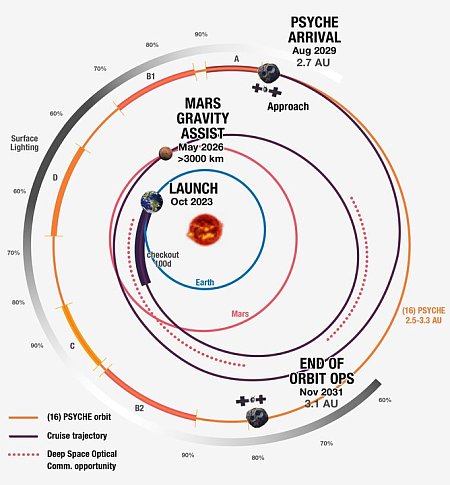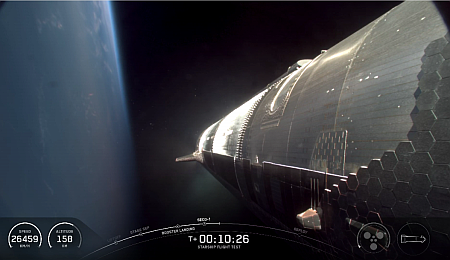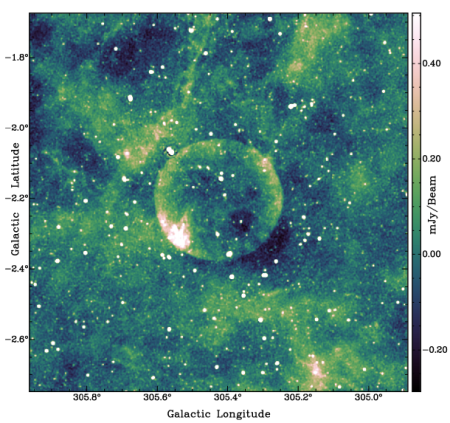China launches its first asteroid sample return mission
China today successfully launched Tianwen-2, its first mission attempting to return a sample from a near Earth asteroid, its Long March 3B rocket lifting off from its Xichang spaceport in southwest China.
Video of the launch can be found here. The probe will take about a year to reach asteroid Kamo’oalewa, where it will fly in formation studying it for another year, during which time it will attempt to grab samples by two methods. One method is a copy of the touch-and-go technique used by OSIRIS-REx on Bennu. The second method, dubbed “anchor and attach,” is untried, and involves using four robot arms, each with their own drill.
Some data suggests Kamo’oalewa is possibly a fragment from the Moon, but that is not confirmed.
After a year studying Kamo-oalewa, Tienwen-2 will then return past the Earth where it will release its sample capsule. The spacecraft will then travel to Comet 311P/PANSTARRS, reaching it in 2034. This comet is puzzling because it has an asteroid-like orbit but exhibits activity similar to a comet.
As for the launch, there is no word where the Long March 3B’s lower stages and four strap-on boosters, all using very toxic hypergolic fuels, crashed inside China. It should be noted that the video I link to above was taken by an ordinary citizen watching from a hill nearby, bringing with him a group of children as well. Considering the nature of the rocket’s fuel (which can dissolve your skin if it touches you), China’s attitude is remarkably sanguine to not only drop these stages on its people, but to allow tourists to get so close to launches.
The leaders in the 2025 launch race:
65 SpaceX
31 China (with one more launch scheduled later today)
6 Rocket Lab (with one launch scheduled for today SCRUBBED)
6 Russia
SpaceX now leads the rest of the world in successful launches, 65 to 50.
China today successfully launched Tianwen-2, its first mission attempting to return a sample from a near Earth asteroid, its Long March 3B rocket lifting off from its Xichang spaceport in southwest China.
Video of the launch can be found here. The probe will take about a year to reach asteroid Kamo’oalewa, where it will fly in formation studying it for another year, during which time it will attempt to grab samples by two methods. One method is a copy of the touch-and-go technique used by OSIRIS-REx on Bennu. The second method, dubbed “anchor and attach,” is untried, and involves using four robot arms, each with their own drill.
Some data suggests Kamo’oalewa is possibly a fragment from the Moon, but that is not confirmed.
After a year studying Kamo-oalewa, Tienwen-2 will then return past the Earth where it will release its sample capsule. The spacecraft will then travel to Comet 311P/PANSTARRS, reaching it in 2034. This comet is puzzling because it has an asteroid-like orbit but exhibits activity similar to a comet.
As for the launch, there is no word where the Long March 3B’s lower stages and four strap-on boosters, all using very toxic hypergolic fuels, crashed inside China. It should be noted that the video I link to above was taken by an ordinary citizen watching from a hill nearby, bringing with him a group of children as well. Considering the nature of the rocket’s fuel (which can dissolve your skin if it touches you), China’s attitude is remarkably sanguine to not only drop these stages on its people, but to allow tourists to get so close to launches.
The leaders in the 2025 launch race:
65 SpaceX
31 China (with one more launch scheduled later today)
6 Rocket Lab (with one launch scheduled for today SCRUBBED)
6 Russia
SpaceX now leads the rest of the world in successful launches, 65 to 50.














